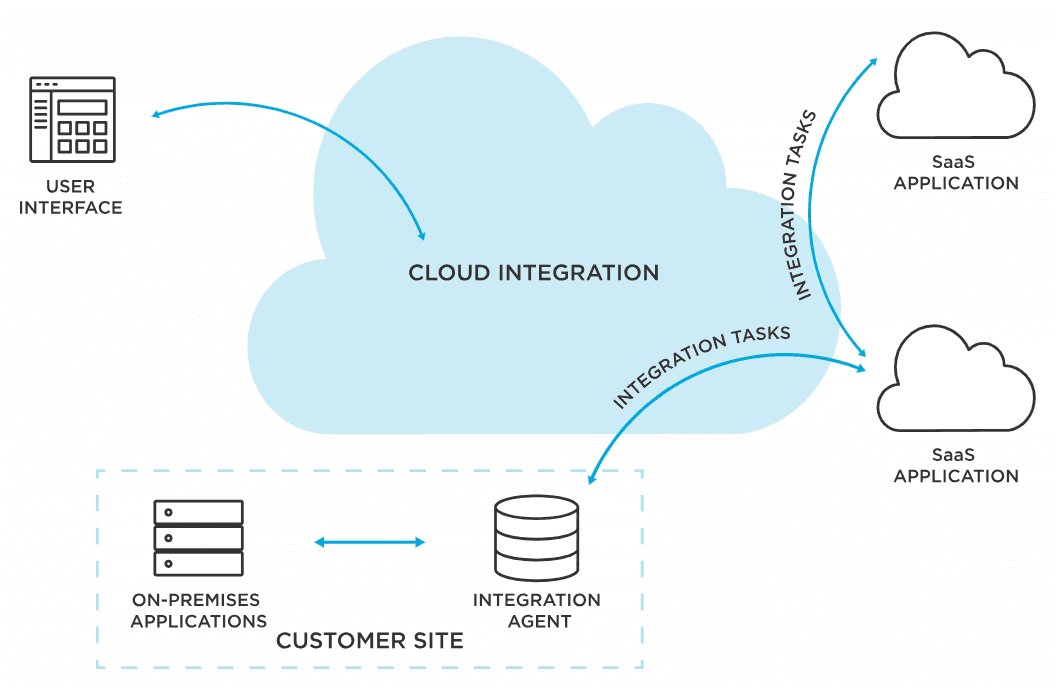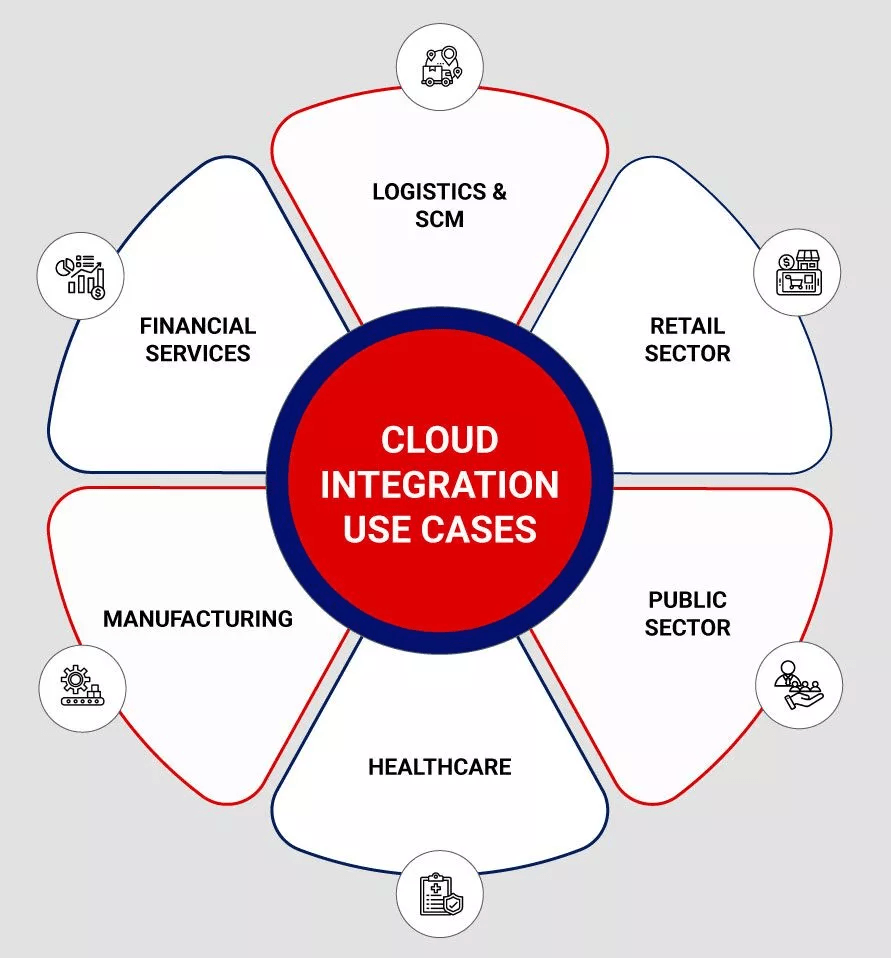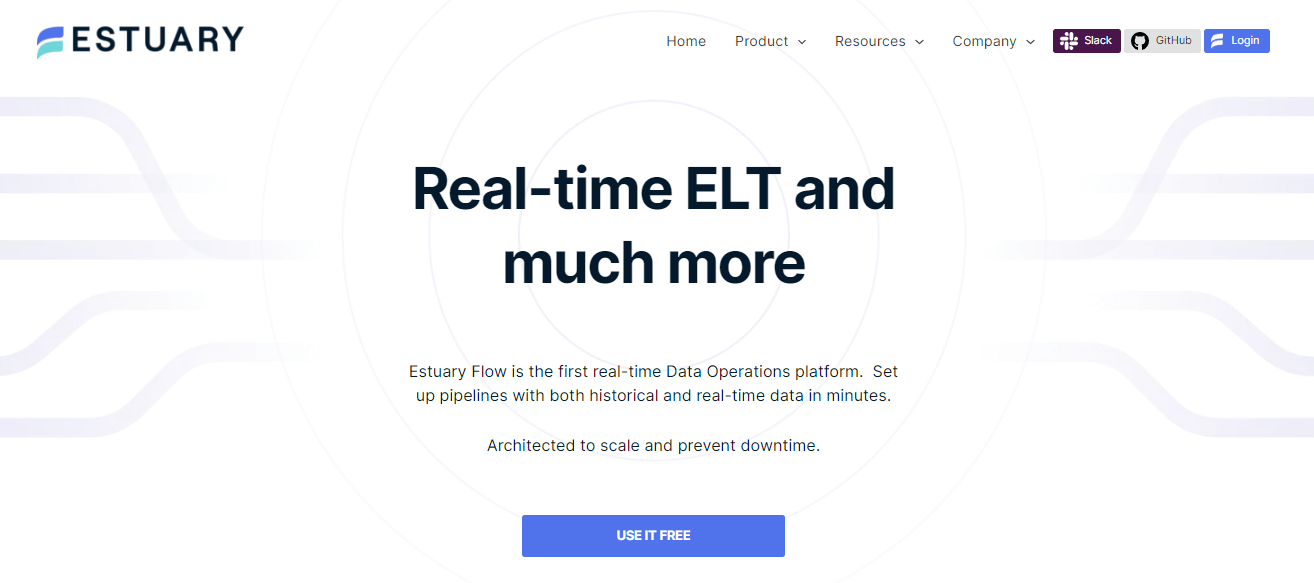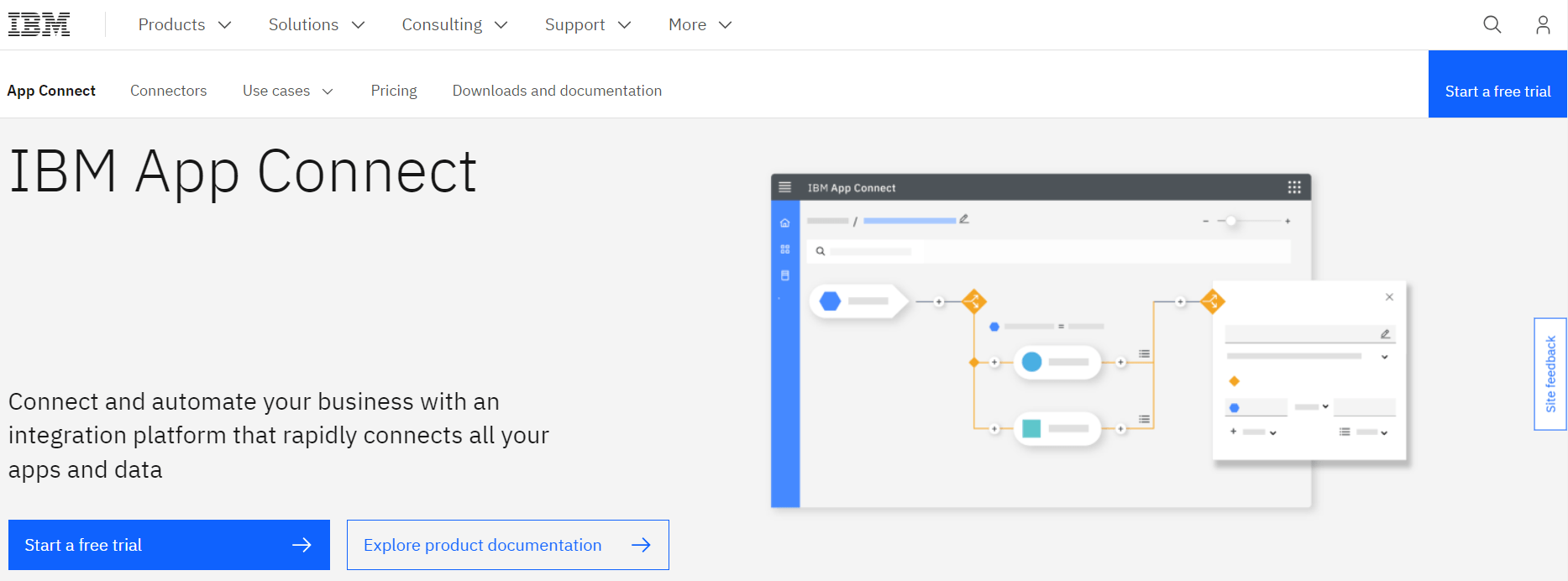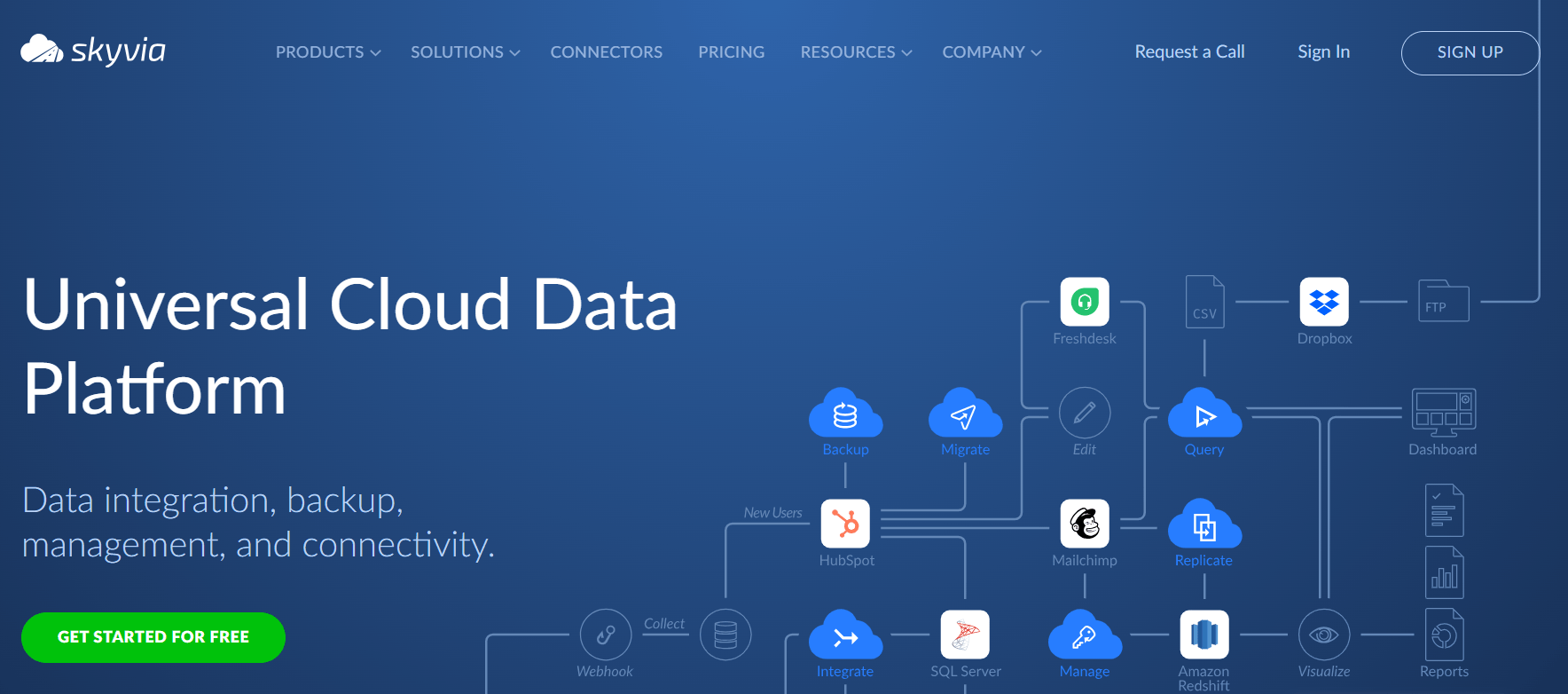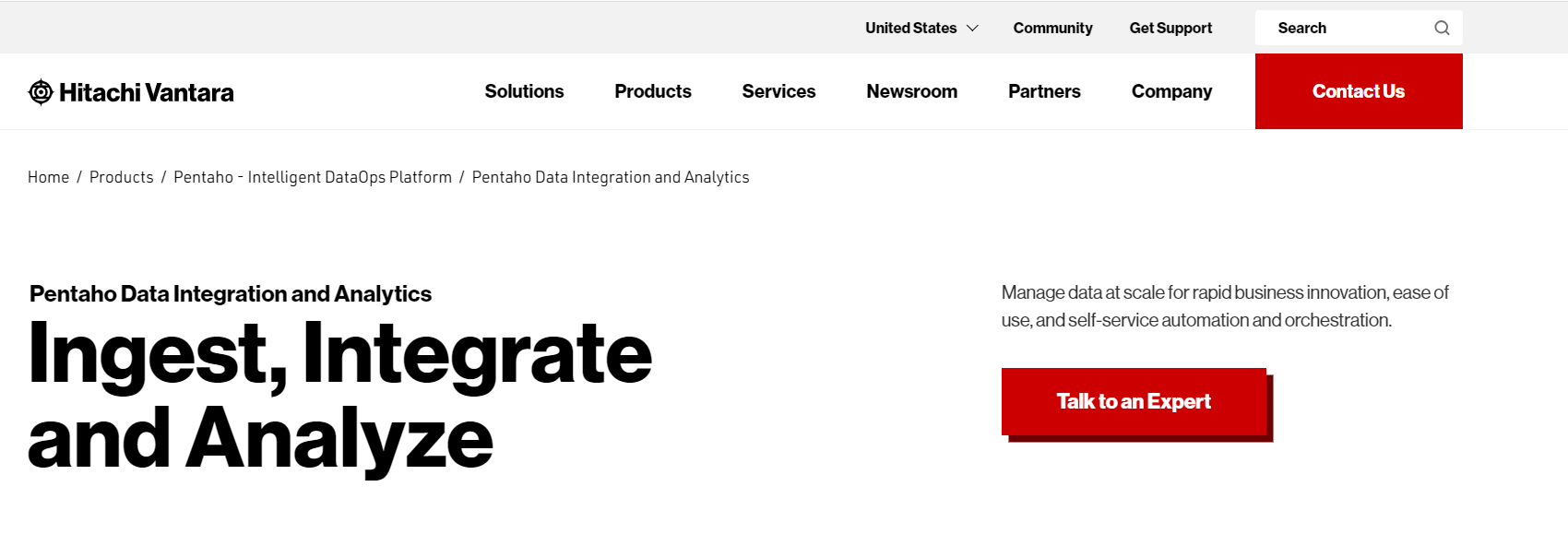
As companies increasingly turn to cloud technologies for their convenience, performance, and cost-effectiveness, the need for effective cloud data integration has become more pronounced. According to recent statistics, the amount of data being generated is growing by an average of 63% per month, as highlighted in a survey by IDG.
This exponential growth in data presents both a tremendous opportunity and a daunting challenge for businesses. Without a proper understanding of cloud data integration and its capabilities, organizations risk being lost in a maze of disconnected data sources, resulting in siloed information and missed insights.
Fortunately, your web surfing has brought you to exactly where you need to be. Just read our guide and it will show you everything you need to know about cloud data integration. You'll discover its purpose, its potential, and even get to explore some leading tools for managing the data integration process.
What Is Cloud Data Integration?
Cloud data integration is the process of combining data from various sources into a single cloud-based storage system, such as a cloud data warehouse, data lake, or database. It uses a set of tools and technologies for the real-time exchange of data and processes, connecting multiple applications, systems, and IT environments. It can occur fully within the cloud or in a hybrid manner, combining on-premises and cloud-based systems.
Cloud data integration can be customized to fit a business’s specific needs. Depending on the requirements, it can involve methods like batch processing, real-time event streaming, APIs, and ETL or ELT pipelines. The goal is to create a streamlined IT infrastructure for smooth data flow and easy accessibility from various devices over a network or via the Internet.
7 Major Capabilities Of Cloud Data Integration
The capabilities of cloud data integration systems extend far beyond just data connectivity. They can help businesses overcome many digital transformation challenges. With the exponential growth in the volume, variety, and velocity of data, the utility of data integration is evident in the ability to make data accessible, usable, and valuable.
Let’s explore some of the benefits of cloud data integration.
Data Modernization
Cloud data integration facilitates businesses, especially public cloud users, in transitioning from legacy systems to modern cloud-based systems. It provides solutions to transport and load accumulated data effortlessly onto desired cloud platforms. In this way, legacy systems continue to operate without compromising security or performance, allowing a smoother transition to a hybrid cloud environment.
Scalability
The flexible nature of cloud data integration platforms allows the seamless incorporation of future technologies and applications as businesses expand. This capability eliminates the need for significant future migrations and promotes continuous business growth without interruption. Even as the cloud provider introduces new services, these platforms maintain adaptability.
Operational Efficiency
Cloud data migration facilitates swift and consistent data synchronization to enhance operational efficiency. It minimizes the accessibility of redundant data and gathers all necessary data and systems in one place. This consolidation automates the execution of repetitive tasks, thereby improving productivity and reducing the need for manual data entry.
Business Process Optimization
Cloud data integration enables real-time data sharing, a key requirement for current business models. It ensures seamless access to data from various networks and applications for supporting the optimization of business processes.
Improved Connectivity & Visibility
Implementing cloud data integration offers improved connectivity and visibility for businesses. In an era filled with uncertainty and disruption, integrated data access assists businesses in maintaining high performance. It also provides a comprehensive view of the business’s current state backed by the latest data.
Reduced Costs
Cloud data integration can help businesses cut operational costs. Integrating data from various cloud providers reduces the number of users required to run applications and enables more efficient process management. Plus, shifting to cloud integration means no upfront investment in on-premise solutions, decreasing maintenance costs.
Robust Security & Data Governance
Ensuring data security while handling cloud data is a common challenge for businesses. Robust cloud data integration tools can develop workflows adhering to data management standards. This feature simplifies compliance with evolving data governance standards and data privacy regulations.
To truly understand the capabilities and applicability of cloud data integration, let’s explore its diverse use cases across various sectors and see how cloud data integration can be tailored to address specific industry challenges and drive tangible business outcomes
6 Use Cases Of Cloud Data Integration In Different Sectors
Let’s take a look at 6 compelling use cases of cloud data integration and see how different industries harness its power to optimize operations, streamline workflows, and unlock valuable insights.
Empowering Financial Services
Financial services, with their vast data reservoirs, benefit significantly from cloud integration. By integrating enterprise data in a cloud environment, financial institutions get a comprehensive, unified view of customer data. This improves regulatory compliance and the ability to personalize customer experiences. Cloud integration also improves service delivery and customer satisfaction, and drives growth.
Streamlining Logistics & Supply Chain Management
Efficiency is the backbone of logistics. For crucial tasks like freight management, equipment utilization, and transit frequency tracking, businesses need to gather and synchronize data from disparate sources. Cloud integration facilitates this, delivering reliable analysis of key performance metrics with minimal room for errors.
Revolutionizing Retail Sector
With the shift of traditional stores to online platforms, new applications are introduced to manage order processing, shipping, inventory tracking, and payment handling. Cloud data integration services efficiently share data among these applications to ensure a seamless online shopping experience.
Enhancing Public Services
State and federal governments can use cloud integration solutions to offer online services. Departments like motor vehicles, local governments, and police can expedite processes like online vehicle registration renewals, home remodeling permits, federal taxation, and voter registrations through cloud application integration.
Advancing Healthcare
Data silos can be detrimental to patient care quality. Cloud integration promotes interoperability, reinforces provider communication, and endorses patient-first care to alleviate this issue. It empowers patients to easily access their health records via apps, aiding treatment adherence and improving patient outcomes.
Optimizing Manufacturing
In the manufacturing sector, cloud integration brings together data from engineering systems, assemblies, inventories, supply chains, and shipping. This comprehensive data integration helps companies manage production quantity and quality more efficiently.
After familiarizing the practical application of cloud data integration across various industries, it’s important to understand the potential hurdles and complexities involved in implementing cloud data integration initiatives. This will help you proactively identify and mitigate these challenges for a smoother and more successful integration journey.
7 Cloud Data Integration Challenges
Cloud data integration can be challenging for various factors. Addressing these challenges effectively enhances the capabilities of cloud data integration and provides you with a tool that can transform your operations significantly.
To get a clear understanding of these hurdles, let's take a closer look at each.
Data Migration
The first challenge in cloud data integration is the migration of data. Transporting information between multiple cloud-based data migration tools, databases, and systems is a complex, error-prone task. It can consume significant time particularly when large data volumes are involved.
High data volume and frequent data transfers can sometimes make migration virtually impossible. Companies should formulate robust strategies for navigating these obstacles efficiently.
Standardization Issues
The lack of standardization in cloud data integration protocols is also a big problem. This challenge intensifies when integrating cloud platforms with on-premise systems.
The inconsistency in data formats and schemas among different cloud platforms and services requires frequent modifications to data connectors or adaptors. These modifications should be performed per application updates and the introduction of new software or platform versions.
Cloud Data Integration Security
Given that any internet-based service is vulnerable to cyber threats, cloud data integration is no exception. Firms dealing with cloud data integration face threats such as data theft, ransomware, and data destruction. Despite the rise in these potential threats, security measures of integration tools are continually evolving to enhance data protection.
Compliance Requirements
The process of maintaining compliance is paramount because of the array of regulations like GDPR and HIPAA employed in various countries. When selecting software for data integration, make sure that it adheres to all the regulations applicable to your business and industry.
Architectural Hurdles
Despite their inherent scalability and performance capabilities, cloud systems can struggle to integrate data. The synchronization of various external systems becomes challenging when integrating data stored across multiple cloud platforms.
ETL Processes
Traditional data integration projects use ETL (extract, transform, load) workflows for data cleaning and transformation. However, it is a significant challenge to implement ETL in a way that doesn't overly complicate and slow down the integration process.
Selection Of Suitable Software
Selecting a reliable platform that can perform cloud integration tasks error-free is not an easy task for many companies. Choose a tool that fulfills every requirement of the necessary use case, supports automation, and facilitates workflow.
5 Best Cloud Data Integration Platforms
Cloud data integration tools generally simplify the task of combining data from different sources and making it accessible for analysis and insight generation. As businesses increasingly migrate their operations to the cloud, these tools have become essential for seamless data integration, transformation, and management.
Let’s delve into 5 of the best platforms for cloud data integration.
Estuary Flow
Estuary Flow, our comprehensive ETL tool, delivers a reliable, robust solution for data migration and integration, with fully-managed Change Data Capture (CDC) and Extract, Transform, Load (ETL) pipelines.
Using real-time streaming SQL and Typescript transformations, Flow allows for rapid, seamless transfer and transformation of your data, effectively working with various cloud platforms, databases, and SaaS applications to meet diverse operational needs.
Estuary Flow Features
- User control & accuracy: Offering complete control over data pipelines, Flow’s built-in schema controls help maintain data accuracy and consistency.
- Superior scalability: Capable of handling hefty workloads, it exhibits a robust capacity of up to 7GB/s for Change Data Capture (CDC) from databases of all sizes. As a distributed system, Flow can easily scale in line with your data volume and can quickly refill large quantities of data from originating systems.
- Holistic customer view: It enables a comprehensive, real-time view of customers, supplemented by historical data, facilitating personalized customer interactions.
- Seamless legacy connections: Flow helps link traditional legacy systems to modern hybrid cloud environments, easing the transition toward modern data management.
- Integrated connectors: With more than 200 pre-existing connectors, Flow easily integrates data from various data sources and destinations. You also get the flexibility to request new connectors as needed.
- Automated operations: The tool takes over schema management and data deduplication which eradicates the need for extra scheduling or orchestration tools, allowing you to focus more on your core strategic initiatives.
AWS Glue
AWS Glue, Amazon’s leading data integration service, gives data analysts, ETL developers, and business users a comprehensive and user-friendly tool to extract, transform, and load their data. Powered by serverless technology, it is an optimal blend of convenience and functionality for large-scale data operations.
AWS Glue Features
- Flexible job scheduling: It can schedule jobs on-demand or event-based, supporting concurrent job initiation and seamless execution flow.
- Unified data catalog: A centralized metadata repository within Glue helps improve data management and accessibility across various AWS pipeline sources.
- Intuitive code generation: AWS Glue can automatically generate Scala or Python code for ETL tasks which reduces manual intervention and simplifies the process.
- Automated schema discovery: Glue uses automated crawlers for schema discovery, storing the information in a central data catalog for easier task management.
- Customizable developer endpoints: These flexible endpoints allow developers to create custom readers, writers, and transformations which enhances the debugging process.
IBM App Connect
IBM App Connect is a premier cloud Integration Platform as a Service (iPaaS) and is specifically designed for the rapid connection of applications and data across disparate systems. With its innovative AI-driven features and pre-built connectors, it provides an advanced platform for seamless data and application integration.
IBM App Connect Features
- Hybrid management: The ability to manage integrations across cloud and on-premise environments reduces administrative tasks.
- Insightful dashboards: Comprehensive visibility into the performance of integration flows ensures the smooth operation of data pipelines.
- AI-Powered mapping: The AI-driven mapping capabilities simplify complex data transformations and streamline the integration process.
- Ready-to-use connectors: App Connect equips users with hundreds of prebuilt connectors to facilitate the rapid integration of SaaS applications.
- Collaborative interface: It has a user-friendly platform for both business technologists and integration specialists, democratizing the data integration process.
Skyvia
Skyvia is a top-tier no-code cloud data integration platform. It supports various data integration scenarios such as ETL, ELT, Reverse ETL, data migration, one-way and bi-directional data sync, and workflow automation. Aimed at enhancing your data-related performance, it caters to everyone, from IT professionals to business users, and offers a secure and easy-to-use interface.
Skyvia Features
- Effective data import tool: ‘Skyvia Import’ simplifies the data transfer process between different sources, with no need for coding.
- Comprehensive data connectors: Skyvia supports over 160 ready-to-use data connectors for extensive integration across many platforms and domains.
- ETL services: With its full-featured ETL capabilities, Skyvia can handle complex operations like data splitting and lookups, making it a versatile no-code solution.
- Selective data sync: Skyvia Import's capability to load only new and modified data helps achieve one-way synchronization between data sources, thereby minimizing duplication.
- Data relations preservation: It ensures the relationships between imported files, tables, or objects are maintained. This facilitates easy data import even when source and target structures differ.
Pentaho Data Integration And Analytics
Pentaho Data Integration and Analytics is Hitachi Vantara’s intelligent DataOps Platform that serves as a valuable tool for managing and integrating data at scale. It is designed to foster rapid business innovation through self-service automation and orchestration.
Pentaho Data Integration & Analytics Features
- Quick data delivery: The tool enables the rapid generation of insightful reports which reduces data management costs and drives business value.
- Flexible data self-service: It houses a high-performance transformation engine for easy data visualization and connection across diverse environments.
- No-code data pipelining: Pentaho offers a no-code functionality that enhances the quality and reduces the complexity of data pipeline construction.
- Efficient data onboarding: It streamlines the integration of a wide array of data sources with a user-friendly, drag-and-drop interface, substantially boosting productivity.
- Robust dataflow orchestration: Pentaho allows smooth switching between native Kettle and Spark engines, integrating AI/ML models into the data orchestration process.
Conclusion
Managing data scattered across multiple cloud sources can be challenging. Cloud data integration offers a solution for consolidating, transforming, and purifying data, thereby offering a complete view of all critical enterprise interactions.
However, while cloud data integration offers numerous benefits, it also presents its own set of challenges, from data security concerns to dealing with legacy systems and ensuring data consistency. These issues underscore the need for robust tools that can help overcome these hurdles.
Here’s where Estuary Flow shines. It provides a reliable, cost-effective solution for data migration and integration. Built with comprehensive features, including automated operations and efficient scaling, Flow tackles hefty workloads with ease. Not just that, it maintains data accuracy and offers full control over your data pipelines.
If enhancing your cloud data integration strategies with Estuary Flow sounds like the next step for you, don’t hesitate. Sign up for free or reach out to our team to discuss your unique needs.

Author
Popular Articles





